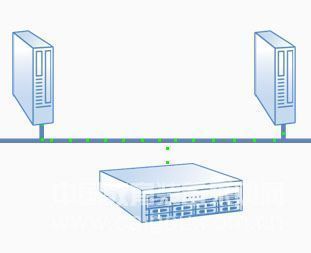Purchasing a virtual tape library is not a simple task: there are so many options on the market that make purchasing decisions difficult.
A good way is to narrow the scope of procurement, first determine which type of virtual tape library can meet the actual needs of the enterprise. Virtual tape library solutions are divided into three categories: storage devices, virtual devices, and gateway devices.
Storage device
Most of the virtual tape library (VTL) solutions on the market today can be classified as storage devices. Fundamentally, a storage device is a physical device in which the internal disk storage is virtualized into a tape library or one or more tape drives. For example, such virtual tape library devices include Oracle's StorageTek device and Hitachi Data System's virtual tape library 5000M model.
There are many advantages to using storage devices. First, since the device is used to simulate a tape drive or tape library, this method can support most backup software. More importantly, storage devices can usually provide faster backup and recovery operations than physical tape drives, because disks are non-linear storage devices, and data is usually deduplicated. Another advantage is that because storage devices use disks, companies can save on tape.
The biggest drawback of using storage devices to replace physical tape backups is that the virtual tape library solution may become a single point of failure. In order to protect the backup data stored on the device from loss, it is necessary to copy the backup data type. Many enterprises will use what is called a disk-to-disk-to-tape solution, that is, deduplication of content in a virtual tape library and copy to tape. The additional gain brought by this approach is to allow enterprises to place copies to other sites, which is very important, because the disks in storage devices are usually not removable.
In some cases, redundant storage devices can also be used. If a device fails, a copy of the data on the redundant device is still available.
Virtual device
The positioning of virtual devices is to provide various benefits similar to storage devices at a lower price. Generally speaking, the virtual device is sold as an independent virtual machine, which can be Vmware or Hyper-V. Procurement of virtual equipment can save investment in physical hardware, so this solution saves costs. However, virtual devices use the existing storage resources of the virtualized infrastructure, which is usually based on the SAN architecture. Some use cases for virtual devices include Amazon ’s AWS storage gateway and FalconStor ’s NSS virtual device.
For most enterprises, the use of virtual devices is quite good, but it still has two disadvantages. The first is that virtual devices take up resources in your server virtualization infrastructure. In some cases, storage space, memory, processor clock frequency, and disk I / O are more suitable for production workloads than backups.
Second, virtual devices usually have much lower processing power than physical devices. Physical equipment can generally be configured with appropriate storage capacity at the time of purchase, and gradually increases with the need for enterprise storage. For example, some virtual tape library devices can accommodate 4TB to 68TB of storage space. In contrast, the overall capacity of virtual appliances is limited by Hypervisor. In general, virtual devices can only support up to 5TB of storage.
Gateway equipment
The gateway device is such a virtual tape library solution that stores data in another place. Some gateway equipment will use the enterprise's SAN storage instead of providing a large amount of internal storage. The biggest benefit of this type of device is that it can use your existing storage resources rather than being limited by the capacity of the virtual device. In addition, this type of gateway device does not consume the server resources of the host like a virtual device. Products of this type of gateway equipment include IBM's TS7650G ProtecTIER gateway and FalconStor VTL gateway equipment.
Some gateway devices are called cloud storage gateways. Not all cloud storage gateways are designed for virtual tape libraries, but some do. This type of device is similar to a storage device, which has dedicated internal storage and provides deduplication and encryption functions. The difference between a cloud storage gateway and a storage device is that the cloud storage gateway can upload a copy of the data to the cloud storage end, so that the copy of the data can be safely stored at the remote end.

Stainless Steel Pet Scissors,Pet Curved Cutting Scissors,Pet Safety Scissors,Pet Magasin Scissors
Zhangjiagang Mister Tools Co., Ltd , https://www.msscissors.com